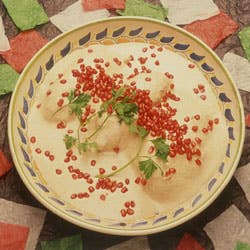
The Flavors of Mexico
In 1519, Cortes and company came to the New World in search of treasure—but upon arriving found another type of gold: corn, the staple culinary crop of the Mesoamericans. By then, the Pre-Columbians had been cultivating corn, or maize, for over 6,000 years, supplementing their simple dishes with indigenous spices like chile and chocolate and vegetables such as chayote and the tomatillo.
Indeed, when the conquistadores arrived, native Mexican food culture had already given birth to a bounty of staples that are still enjoyed today, like tamales, tortillas, and pozole, a stew made with puffed corn. The Spaniards took that trove of gastronomic treasures and integrated European ingredients, like garlic, onions, meat and cheese, with local Mexican ingredients, like corn and beans, to form hybrid preparations such as mole, which combined Old World sauce-making techniques with the flavors of New World chiles and chocolate.
As the two cultures intertwined, a mestizo, or crossbreed, society formed to shape the foodways—and the people—of Mexico into what we know today. But the sheer size of the country and the strength of its traditions in the face of colonization also allowed regional differences to flourish. Now, in Northern Mexico, corn-fed beef and flour tortillas are the preferred dish, while on the Gulf Coast, seafood features prominently, whether it is mixed in to tacos and tamales or served its their own. The Pueblo region is famous for earthy moles and as the birthplace of meat-stuffed chiles rellenos, while the Yucatan peninsula, for better or worse, is marked by its love of edible bug snacks of crickets and grubs. In Mexico, ancient victuals, modern techniques and the vegetal bounty of the local markets swirl together harmoniously, mirroring the history of the country itself.
Images provided by Mexico Tourism
Keep Reading
Continue to Next Story










